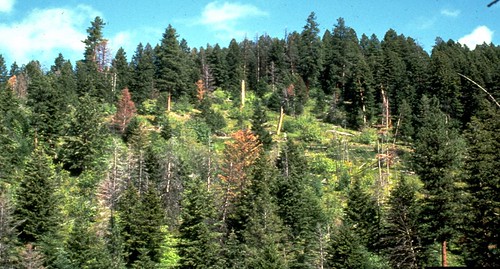
The old proverb: “You can’t see the forest for the trees” should have continued with a line saying that it’s even harder to see below the trees. Because seeing under trees, their root system to be exact, is how scientists understand and appreciate the things that will determine what we all see in our future forests. A new publication just released by the US Forest Service seeks to help forest managers recognize important root diseases and provide the best management strategies.
Ordinarily, we depend on decay organisms to break down wood to recycle enormous amounts of above ground materials such as leaves, limbs, and tree trunks. Without these subterranean decomposers, we would find ourselves buried in forest debris. But what makes beneficial decay organisms go bad and attack the root systems of living trees? In a word, disease.
Tree disease is any harmful deviation, caused by a persistent agent (like a fungus), impacting the normal function of the tree. Root diseases occur when trees respond to the lingering effects of these persistent agents as they prevent key root functions such as water uptake or alter structural integrity of the tree.

Even after the tree dies, these fungi can live on, waiting for new trees to emerge, re-infecting generations over and over. In fact, today’s forests likely reflect millennia of influence and damage by root disease. Disease pockets may first go unnoticed, but as time marches on their impacts can be seen as slow and reduced growth.
Urban communities look to landscape trees for their ability to reduce air and noise pollution, provide energy-saving shade, furnish habitat for wildlife, improve aesthetics, add property value, and contribute to community wellness. Root disease damage becomes increasingly more important where people live because gravity works. Eventually infected trees die becoming hazards where people live and recreate, ultimately becoming a danger to the community and leaving us with less resilient forests.

While we may not be able to entirely remove undesirable diseases, it is possible to utilize integrated treatments to minimize their impact and keep the future of our forests safe and healthy. The recent report is a useful tool to do just that.




